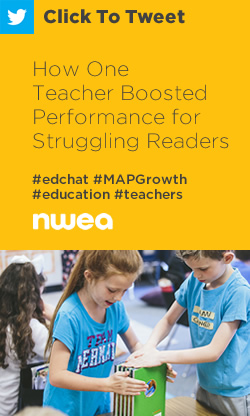 Partnering to help all kids learn® is not only the mission of NWEA. It’s also the undertaking of educators nationwide throughout the school year. Districts establish policies and guidelines to support partnerships between schools, teachers, students, and communities.
Partnering to help all kids learn® is not only the mission of NWEA. It’s also the undertaking of educators nationwide throughout the school year. Districts establish policies and guidelines to support partnerships between schools, teachers, students, and communities.
For example, there are third-grade retention policies, which help ensure students are on track for future academic success. Steve Canavero, former superintendent of public instruction in Nevada, affirmed the value of these policies in a 2018 interview: “The research is clear: a clear trajectory to future academic success is established only when a student is able to develop a strong foundation in early reading by the end of third grade.”
No one knows the reality of third graders unready to advance to fourth grade better than Angel Macklin at Bright Elementary School in Chicago. When only 25% of students were performing at or above the third-grade Lexile level—and 44% were below the grade-level median according to MAP® Growth™ normative percentiles—Angel knew she needed to build a comprehensive learning plan. By the end of the school year, she’d made a tremendous difference in the lives of her students: 65% of them were at or above the third grade Lexile reading level.
We sat down with Angel to learn about how she turned things around. Her responses were edited for length and clarity.
Tell us about your experience as an educator.
I have been an educator for over 12 years. I’ve taught students from pre-K to third grade. I’ve been a classroom assistant, classroom teacher, teacher leader, coach, mentor, and local district facilitator. I currently teach all the core subjects in third grade: reading, math, science, social science, and social-emotional learning.
My students knew I was working my hardest to get them to where they needed to be by the end of third grade, and they joined in the work because they knew my commitment to them was genuine.”
When you met your students for the first time, what did you know for sure?
I knew I had to build a classroom culture and safe learning community, which included my relationships with the students and their relationships with one another. I believe a classroom community sets a strong foundation for learning. It’s important for me to see my students excel on assessments like NWEA’s MAP Growth, but also that they form positive relationships with their peers and adults, and that they are able to effectively communicate with other individuals.
As a third grade teacher, you’re expected to teach third grade standards, but your students began the year with a lot of unfinished learning. So where did you begin?
I started the year off with a lot of concerns for my students. At the beginning of the year, over 60% of the class tested at beginning reader levels on MAP Growth. I needed to start planning instruction in each content area at the level my students were. I knew it was crucial to expose them to rich, highly engaging, complex tasks to get the job done.
How did MAP Growth help you with planning?
It helped me break down the standards for their grade level to see exactly where I had to start instruction. Small grouping is definitely a key factor in closing learning gaps. The learning continuum report assured me that I needed to do a lot of fluency building in reading and math to help students understand skills and concepts.
 Tell us about setting realistic and attainable growth goals for students.
Tell us about setting realistic and attainable growth goals for students.
I knew I needed to have honest conversations with my students about where they were and the work we had in front of us. My students knew I was working my hardest to get them to where they needed to be by the end of third grade, and they joined in the work because they knew my commitment to them was genuine.
What tips can you offer teachers who are striving for student growth?
I have three:
- Let data inform instruction. Assessments as well as your classroom observations inform you on what steps to take and skills to build in each individual student. Knowing what score a student received on any assessment is just the first piece in planning for growth
- Align your instruction with student learning needs. It’s important to become familiar with learning modalities and strategy preferences with each student. I focus on teaching the whole child
- Celebrate success. Capitalize on small successes because many small successes can turn into big success
It sounds like you had a great year! What are you celebrating now?
My students and I celebrated having the highest percentages schoolwide of students meeting or exceeding their growth targets in both reading and math on MAP Growth!